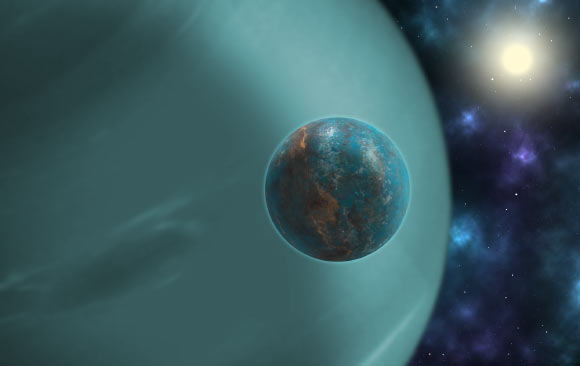
The search for life outside of our planet has a new target: exomoons. Traditionally scientists have looked to other planets for signs of life, but a new study by an astrophysicist from the University of Lincoln, U.K., suggests we may be more successful if we started looking at moons as well.
Dr. Phil Sutton looked for exomoons orbiting the planet J1407b, a gas giant which is one of the first planets with a large ring system to be discovered outside our Solar System. Called a “super-Saturn,” the 16 million-year-old planet is located 434 light-years away. The planet’s vast system of rings means a good possibility that moons could be found in orbit around it.
This is important because relatively few exoplanets have been found in the “habitable zone” around stars, where they are close enough to their stars for liquid water to be present on their surface, but far enough away that the water doesn’t vaporize. It is generally believed that liquid water is an essential component for the development of life, making exoplanets in the habitable zone promising targets for investigation. Because there are few of these planets, we could instead look at moons, which Sutton believes are more likely to host liquid water.
“These moons can be internally heated by the gravitational pull of the planet they orbit, which can lead to them having liquid water well outside the normal narrow habitable zone for planets that we are currently trying to find Earth-like planets in,” Sutton explained to Sci News. “I believe that if we can find them, moons offer a more promising avenue to finding extraterrestrial life.”
In his study of J1407b, Sutton modeled the rings around the planet, which are 200 times the size of those around Saturn. In the case of Saturn, there are gaps in the rings which are caused by the presence of nearby moons. But in the case of J1407b, Sutton found that if he added a moon to the model at various distances from the planet, it did not explain the gaps observed in the rings.
The study will be published in the journal Monthly Notices of the Astronomical Society and is available to view on pre-publication archive arXiv.
Editors' Recommendations
- MIT researchers detail plans for private missions to search for life on Venus
- Curiosity rover performs special experiment to look for evidence of life on Mars
- The Very Large Array will search for evidence of extraterrestrial life
- NASA’s Mars 2020 rover will search for evidence of ancient life on red planet
- Dead planets give off ghostly radio waves which we should be able to detect




